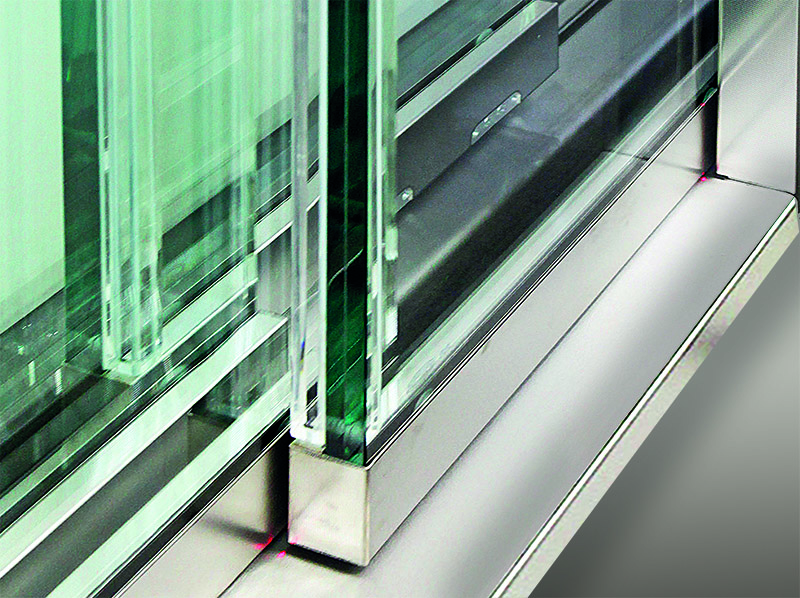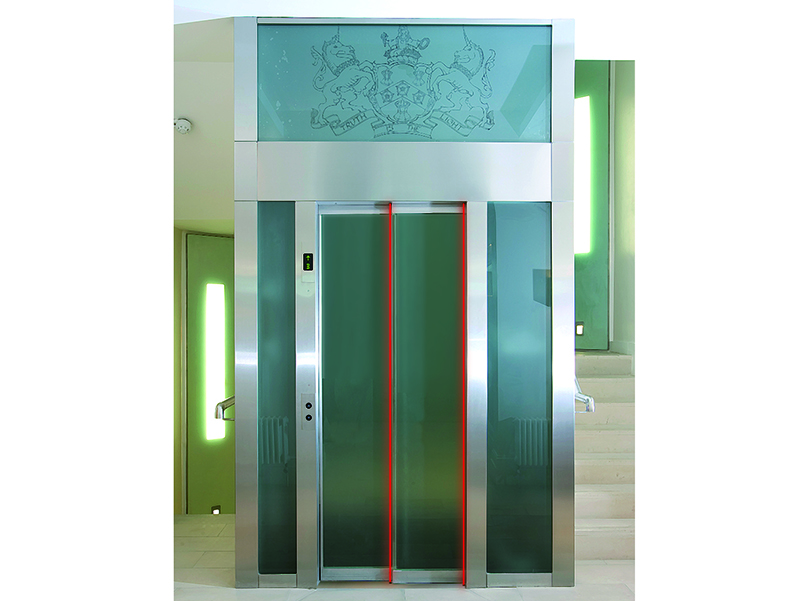Watch out for your hands? - Not any more!
Curious children stare in fascination through the glazed landing doors into the lift shaft. They hold the glass doors with both hands and often fail to notice that when the lift door opens the landing door also moves towards the door frame.
Before the child can get its hands away from the door, they are caught between the door leaf and frame. The door-open movement is only blocked after the maximum motor force of the door drive has been exceeded. Meiller Aufzugstüren has developed a solution with which such accidents can be avoided.
Various methods
It is admittedly extremely rare to read of accidents involving children’s hands being trapped in glass doors in Germany, but a European department store chain now regards this as the no. 1 accident cause. The accident frequency is said to be at least once a week, with up to several cases a month in some stores. In most cases the "matter is handled quickly and unbureaucratically on the spot.” This suggests that the number of unreported cases of such accidents is extremely high.
The lift industry currently has various methods intended to counteract the trapping of children’s hands: reduced gaps between glass door leaves and door frames can help as well as the reduction or clouding of glass fields to 1100 mm, repellent geometry of the door frames or spraying the glass surfaces with particular media that is supposed to facilitate slipping of hands.
New standards with FingerGuard
Future standards and guidelines will attempt to bring about improvements in this area, but without specific instructions on what to do. For example EN 81-20 provides for designing glass doors to be opaque up to a height of 1100 mm, alternatively for detecting children’s fingers up to a height of at least 1600 mm when the doors open or restricting the gap between door leaf and frame up to a height of 1600 mm to 4 mm at most, in operation to 5 mm. Projections on glass doors may not exceed 1 mm, the radii on frames 4 mm. However, the spraying of glass surfaces is explicitly ruled out.
Meiller has set new standards with its FingerGuard system. The area to be monitored is very nar-rowly defined with a range of 10 – 15 mm. This prevents children’s fingers being able to "trick” their way past the detector in the intake area. If a hazard is detected in the monitoring area, the door sys-tem comes to a standstill before the object reaches the intake area.
In order to bring a glass door to a stop at normal opening speed in the monitoring area, two components especially developed for this purpose are needed: a detector that can be set easily for the area desired and has to be trained once on the lift door and a brake circuit located centrally in the door drive system and which is normally passive.
Simple installation
Installation of the FingerGuard is simple, because it is delivered as a plug-in system. If an object is now detected in the monitoring area, the connection between the door controller and motor as well as the input signals to the door controller is immediately interrupted and the entire energy available to the door drive opposed to the door lift.
As a result, the lift door comes to a standstill before the object is drawn into the opening gap. The system is activated by the door-open command (the sensor only has to be set once on start-up and upon activation is immediately available). As soon as the door has opened completely, the system is deactivated. In this way the system only monitors children’s hands being trapped in connection with the door-open movement and avoids any misinterpretation outside of these phases.
FingerGuard is available for centrally opening doors as well as telescopic lift doors. Work is also being done on retrospective installation.
www.meiller-aufzugtueren.de



























Write a comment